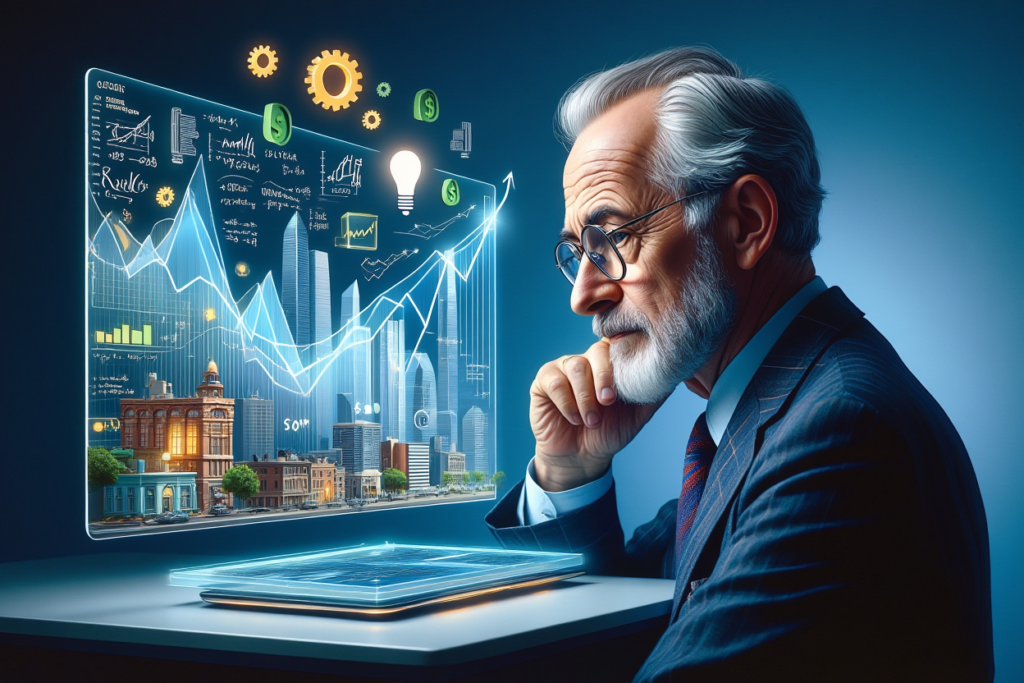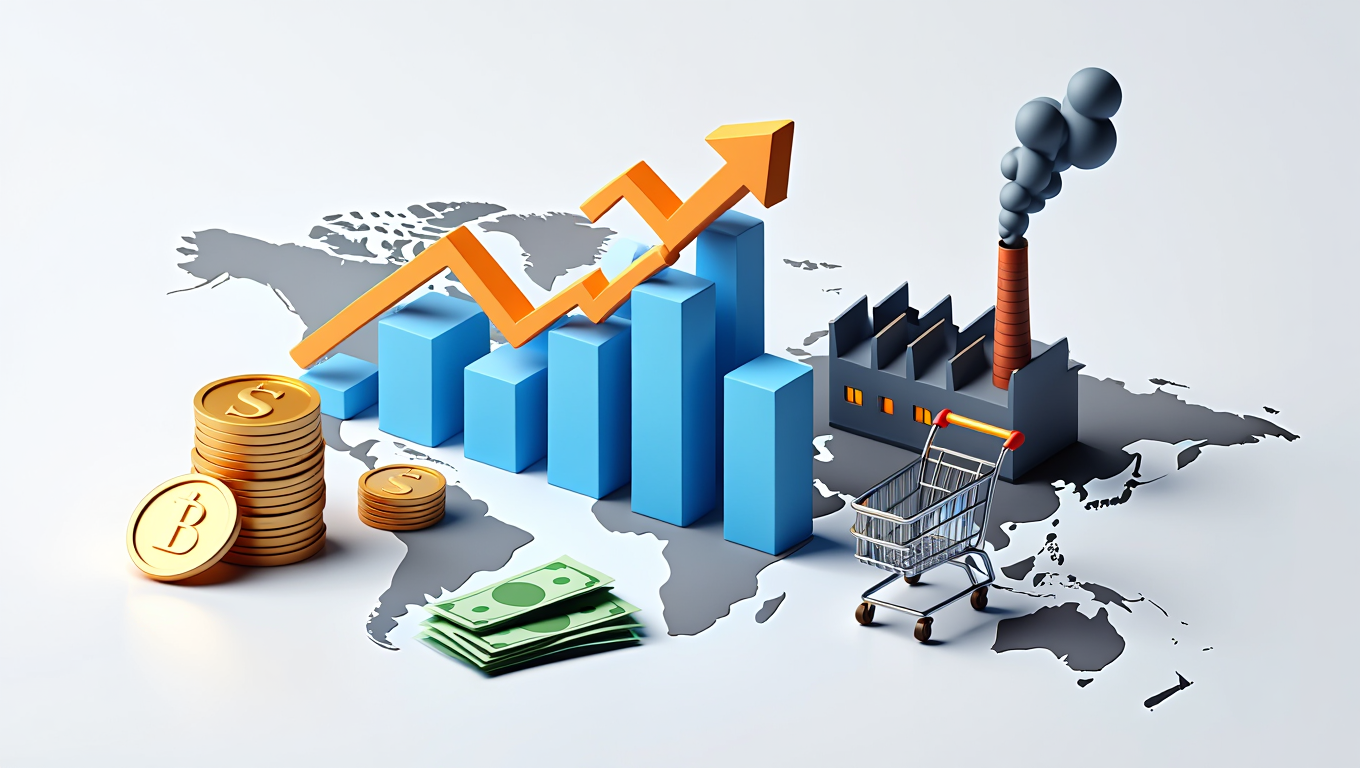Definition of Economics
Economics is the study of how individuals, businesses, and governments allocate scarce resources. Within economics, two major branches provide distinct perspectives on this subject: microeconomics and macroeconomics. Understanding these two concepts is essential for anyone looking to grasp how economies function, from personal finance decisions to national policy-making.
Popular Definitions of Economics:
1. Adam Smith (Wealth-Oriented Definition)

- “Economics is an inquiry into the nature and causes of the wealth of nations.”
- Focus: Wealth creation and accumulation.
- Limitation: Ignores human welfare and social aspects.
- Example: Countries like the USA and China focus on industrial production and global trade to increase wealth.
- Limitation: Only considers wealth and ignores human welfare.
2. Alfred Marshall (Welfare-Oriented Definition)

“Economics study of mankind in the ordinary business of life. It examines how a person earns income and how he spends it.”
Focus: Both wealth and human well-being.
Limitation: Overlooks resource scarcity and future planning.is the
- Example: A government increasing healthcare spending to improve the quality of life for citizens.
- Limitation: Ignores the scarcity of resources and economic growth
.
3. Lionel Robbins (Scarcity & Choice Definition)

“Economics is the science which studies human behavior as a relationship between ends (wants) and scarce means (resources) which have alternative uses.”
Focus: Scarcity, choice, and opportunity cost.
Limitation: Ignores social and ethical considerations.
Example:
- A country must choose between spending on education or defense because resources are limited.
- A farmer with limited land must decide whether to grow wheat or rice.
Limitation: Does not consider social welfare and ethical aspects.
4. Paul Samuelson (Growth-Oriented Definition)

“Economics is the study of how societies use scarce resources to produce valuable goods and distribute them among different people.”
- Focus: Economic growth, production, and distribution.
- Strength: A more comprehensive definition, considering future development.
Example:
- The Indian government investing in infrastructure to boost economic development.
- Strength: A broader definition that includes future planning and sustainability.
- A company deciding how to divide profits among workers, research, and expansion.
Key Concepts in Economics
(i) Scarcity and Choice
- Resources (land, labor, capital) are limited, but human wants are unlimited.
- Example: A student must decide how to spend free time – studying or watching TV.
(ii) Opportunity Cost
- The next best alternative forgone when making a choice.
- Example: If you choose to buy a laptop instead of a bike, the bike is the opportunity cost.
(iii) Production, Distribution, and Consumption
- Production: How goods and services are created. (Example: A bakery making cakes.)
- Distribution: How goods reach consumers. (Example: Online shopping platforms delivering products.)
- Consumption: How people use goods and services. (Example: Buying and eating food.)
Microeconomics vs Macroeconomics: Understanding the Core Differences
What is Microeconomics?
Microeconomics focuses on individual units within an economy. This includes consumers, households, workers, and businesses. It examines how these entities make decisions about resource allocation, pricing, and production.
Key concepts in microeconomics include:
- Demand and Supply: How the price and quantity of goods and services are determined.
- Elasticity: How changes in price affect demand or supply.
- Market Structures: Different forms such as perfect competition, monopoly, oligopoly, and monopolistic competition.
- Consumer Behavior: How individuals make consumption choices to maximize utility.
- Production and Costs: How businesses decide what to produce and how much to spend.
By analyzing these small-scale interactions, microeconomics helps businesses set prices, governments structure taxes, and consumers make informed decisions.
What is Macroeconomics?
Macroeconomics looks at the economy as a whole. It addresses broad issues that affect an entire nation or even the global economy.
Key concepts in macroeconomics include:
- Gross Domestic Product (GDP): A measure of the total economic output of a country.
- Unemployment Rates: An indicator of labor market health.
- Inflation and Deflation: How the general price level changes over time.
- Fiscal Policy: Government spending and taxation decisions.
- Monetary Policy: Central bank actions like adjusting interest rates or money supply.
Macroeconomics is used to analyze economic cycles, forecast economic growth, and develop policies that influence economic stability.
Key Differences Between Microeconomics and Macroeconomics
| Feature | Microeconomics | Macroeconomics |
|---|---|---|
| Focus Area | Individual units (households, firms) | Entire economy (national/international) |
| Objective | Resource allocation, price determination | Economic growth, stability, and development |
| Tools Used | Demand/supply curves, elasticity models | GDP, inflation rates, employment stats |
| Examples | Setting the price of a product | Measuring a country’s GDP growth |
Why Both Matter
While microeconomics gives us a closer look at the building blocks of the economy, macroeconomics provides the big-picture view needed for policy-making and international comparisons. They complement each other and together offer a complete understanding of economic activity.
Conclusion
Microeconomics and macroeconomics are foundational concepts in the study of economics. Each offers unique insights and tools for analyzing different aspects of financial systems. Whether you’re a student, investor, business owner, or policymaker, understanding both is crucial for making informed decisions.
For more in-depth economic guides and articles, subscribe to our newsletter or explore our Economics 101 series.
Nature of Economics – Detailed Explanation
Economics is the study of how individuals, businesses, and governments allocate scarce resources to satisfy unlimited wants. It analyzes decision-making, market dynamics, and economic policies that shape societies.
The nature of economics refers to its characteristics, scope, and methodology. It explains whether economics is a science or an art, whether it is positive or normative, and whether it is a micro or macro discipline.
1. Economics as a Science
Economics follows systematic principles, collects data, and makes predictions like other sciences. However, because it deals with human behavior, it is classified as a social science, not a natural science like physics or chemistry.
Is Economics a Science?
A science must have:
- A structured body of knowledge
- Laws and theories based on observation
- Cause-and-effect relationships
Economics fulfills these criteria because it studies relationships such as:
- The Law of Demand – When prices decrease, demand increases (if all other factors remain constant).
- The Law of Diminishing Marginal Utility – The satisfaction from consuming an additional unit of a good decreases over time.
Example:
- When the price of petrol rises, people drive less or look for alternative transport.
- When interest rates increase, people borrow less and save more.
Limitations of Economics as a Science
- Unlike natural sciences, economics cannot conduct controlled experiments because human behavior is unpredictable.
- The same economic policy may work in one country but fail in another due to cultural, political, and social differences.
Example:
- A tax cut may boost spending in the USA but not work in Japan due to different consumer habits.
2. Economics as an Art
Economics is also an art because it applies theoretical knowledge to solve real-world problems. Governments, businesses, and individuals use economic theories to make decisions, plan policies, and predict future trends.
Example:
- Government Planning: The Reserve Bank of India (RBI) changes interest rates to control inflation.
- Business Strategy: Companies set prices based on supply and demand trends.
Conclusion: Economics is both a science (studying principles) and an art (applying those principles).
3. Economics as a Positive and Normative Science
~Positive Economics (Fact-Based, Objective)
- Deals with facts, observations, and analysis without opinions.
- Answers “What is?”
Examples:
- “India’s GDP grew by 7% last year.” (A fact)
- “Unemployment in the country is 6%.”
Importance: Helps policymakers and businesses analyze real-world data.
Normative Economics (Opinion-Based, Subjective)
- Involves value judgments and policy recommendations.
- Answers “What should be?”
Examples:
- “The government should increase spending on education.”
- “The rich should be taxed more to reduce income inequality.”
Importance: Helps in decision-making and setting future policies.
Key Difference:
- Positive Economics describes reality.
- Normative Economics suggests improvements.
4. Economics as a Social Science
Since economics studies human behavior, it is considered a social science like political science and sociology.
Why?
It studies how people earn, save, spend, and invest money.
It analyzes how governments create policies to influence the economy.
It helps understand how businesses respond to market changes.
Examples:
- Why do people prefer online shopping over traditional shopping?
- How does social media influence consumer spending?
- Why do some countries develop faster than others?
Conclusion: Economics is a science (it follows systematic study), an art (it applies principles), and a social science (it studies human behavior).
Is Economics a Pure or Applied Science?
Pure Science:
- Focuses on theoretical knowledge and economic laws.
Example: Law of Supply & Demand.
Applied Science:
- Uses economic theories to solve real-world problems.
Example: Government policies to reduce unemployment.
Conclusion: Economics is both pure and applied – it studies theories and applies them in real life.
Why is Economics Important?
For Individuals – Helps in personal finance decisions (saving, investing, spending).
For Businesses – Helps in pricing, marketing, and production strategies.
For Governments – Helps in taxation, budgeting, and economic policies.
Examples:
- Understanding inflation helps individuals plan savings.
- Studying demand and supply helps businesses set prices.
- Governments use macroeconomic policies to boost economic growth.
Conclusion of Economics: Understanding the Big Picture
Explore the conclusion of economics as a subject. Learn why understanding economics matters and how it influences individuals, businesses, and governments globally.
Economics is more than just numbers, graphs, and policies—it is the backbone of how society functions. Whether you’re studying it in school or applying it in real-world scenarios, the subject of economics provides a powerful lens to view the complexities of the modern world.
Why Economics Matters
Economics helps us understand how people make choices when resources are limited. From everyday decisions like budgeting a paycheck to global issues like inflation or unemployment, economics offers insights that shape better outcomes.
Key reasons why economics is important:
- Informed Decision-Making: Individuals can manage their personal finances more wisely.
- Business Strategy: Companies use economic principles to set prices, forecast demand, and manage costs.
- Government Policy: Policymakers rely on economic data to create fiscal and monetary policies that promote growth and stability.
- Global Perspective: Economics explains trade, globalization, and international cooperation.
Key Takeaways from Studying Economics
- Scarcity is Unavoidable: Resources are limited, so choices must be made. Economics teaches us how to allocate them efficiently.
- Opportunity Cost is Key: Every choice has a cost—what you give up to get something else.
- Incentives Matter: People respond to rewards and punishments, which influences behavior in predictable ways.
- Markets Coordinate Activity: In free markets, supply and demand interact to allocate resources without central planning.
- Government Has a Role: Even in market economies, governments intervene to correct failures, redistribute income, and stabilize the economy.
The Broader Impact of Economics
Economics touches every part of our lives. It affects the products we buy, the jobs we work, the taxes we pay, and the policies that govern us. By understanding economic principles, we become better citizens, voters, and leaders.
Whether we’re dealing with inflation, climate change, income inequality, or technological change, economics equips us with the tools to analyze and respond effectively.
Final Thoughts
The conclusion of economics as a subject is not an end—it’s a beginning. It empowers us to think critically, solve problems, and make decisions that improve our lives and our communities. As the world becomes more complex and interconnected, economics will remain a vital tool for navigating the future.
To stay updated with the latest in economic thinking, consider following leading economists, reading financial news, or exploring advanced courses. Economics is not just a subject—it’s a lifelong skill.
Want more helpful guides on economics and finance? Subscribe to our blog for regular updates!
